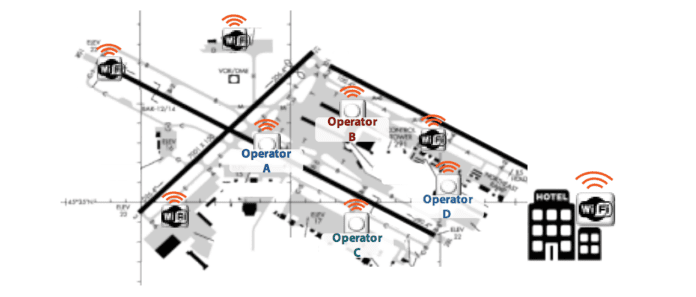Boingo Wireless CTO provides an update on CBRS, MulteFire
Derek Peterson, chief technology officer of Boingo Wireless, sees unlicensed and shared spectrum as a major opportunity for the telecom industry. The combination of CBRS and MulteFire allows for new entrants into the cellular market and better serves key use cases particularly in the internet of things space.
“Our industry is making some changes,” Peterson said during an interview with RCR Wireless News at Mobile World Congress. “We have licensed spectrum, we have unlicensed spectrum and we’re adding now a shared spectrum. It’s a model that allows us to take advantage of everything that’s great in licensed and everything that’s great in unlicensed and really combine it together to bring better coverage.”
He’s referring to the 3.5 GHz Citizens Radio Broadband Service (CBRS), which the U.S. Federal Communications Commission is considering opening up to non-incumbent users via a three-tiered spectrum access system. The current big question is whether licenses will be assigned in increments of three years or 10 years and whether the licensure area will be based on U.S. Census tracts or larger Partial Economic Areas.
“I think that there’s going to be a happy medium that’s going to come out,” Peterson said. “I think that the reality of 70,000-plus Census tract locations probably doesn’t make sense in certain markets…The PEA areas where they’re too small for large areas like Los Angeles where I’m from–it’s the whole area, the county of Los Angeles is a PEA. You’re going to have to split that up. There’s going to have to be some kind of compromise done there and I think the FCC is smart enough that I think they’ll recognize that and there’s be some compromise made.”
Click here to watch the full interview with Peterson.
Peterson is also a major proponent of MulteFire, a technology that deploys LTE solely in unlicensed 5 GHz spectrum. The MulteFire Alliance has developed a 1.0 and 1.1 spec, the latter of which speaks to the IoT applications of cellular in only unlicensed.
“Both CBRS and MulteFire needs handsets, or you need devices,” Peterson said. “The path forward right now with the [MulteFire] 1.1 spec is an IoT path because that’s where we see devices becoming available sooner.” Nokia has announced a MulteFire small cell and has used as a demonstration the idea of using a private LTE network to track and management movements of shipping-related assets in a port environment.
“It’s a great use case and that’s what MulteFire 1.1 spec was focused on, bring that use case out,” Peterson said.

